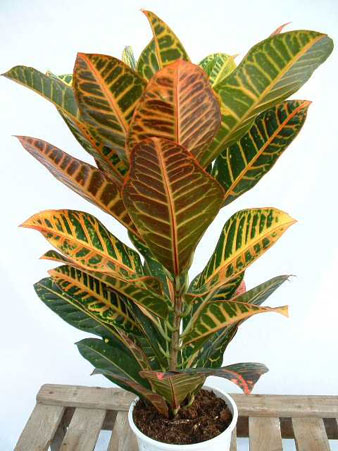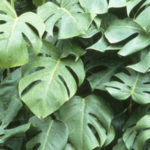
* Keep evenly moist. Although they can tolerate drying out occasionally, it is best to keep crotons well watered.
* Provide ample humidity. Crotons are native to the Malay Peninsula and Pacific Islands and thrive on moist, warm air. Grow on a humidity tray, mist frequently, and group with other plants. Also try to keep temperatures from dropping below 60°F. Keep away from windows in the winter months.
* Place in bright light. Crotons do best in high light. When conditions are dim, leaf color fades. Give two to three hours of bright light each day, making sure the entire plant gets covered. They enjoy an unobstructed eastern exposure.
* Other tips: Provide crotons with a rich, well-drained acidic potting soil that has a pH of about 6.5. Fertilize two to three times per year. Also be aware that they don’t respond well to change in light or temperature, which can cause foliage drop. Avoid shock in large plants by topdressing instead.
* Warning: Crotons are members of the euphorbia family, which tend to have toxic sap that will permanently stain clothing.





